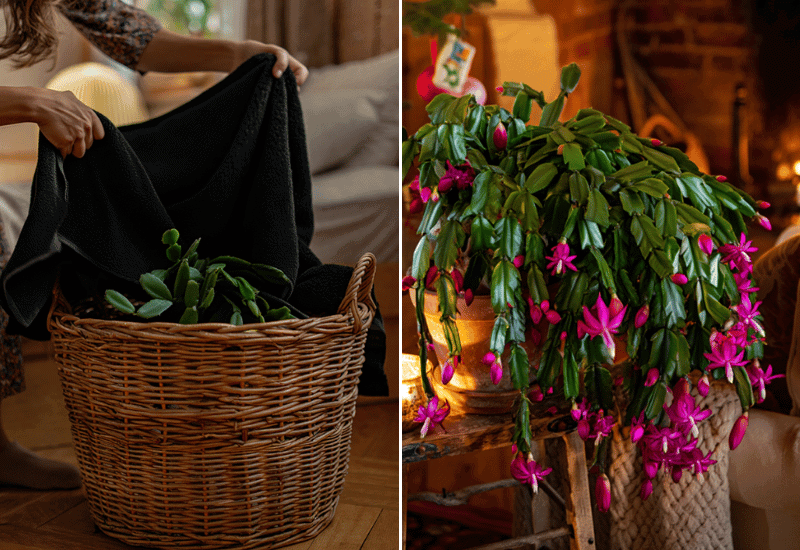
If you’ve ever owned a Christmas cactus, you know the struggle. You wait all season for those gorgeous flowers, only to find the buds show up late, fall off too soon, or don’t appear at all. It can feel frustrating, especially when you were hoping for a burst of color right in time for the holidays.
Here’s the good news. Your plant isn’t broken — it’s just picky about the signals it needs before it will bloom. In nature, it waits for longer nights, cooler air, and a short rest before putting on its show. Indoors, you can trick it into thinking those conditions have arrived a little early.
And the best part is, it’s not complicated. A few simple tweaks in the way you care for your cactus can make all the difference. I’ll walk you through five tricks that really work, so instead of crossing your fingers, you’ll know exactly how to get your Christmas cactus to bloom before the big day.
Why Christmas Cactus Blooming Is Different
If you’ve ever sat there wondering why your Christmas cactus just won’t bloom, you’re not alone. A lot of people treat it like any other houseplant and then get frustrated when it stays green all season. The thing is, this plant plays by its own rules.
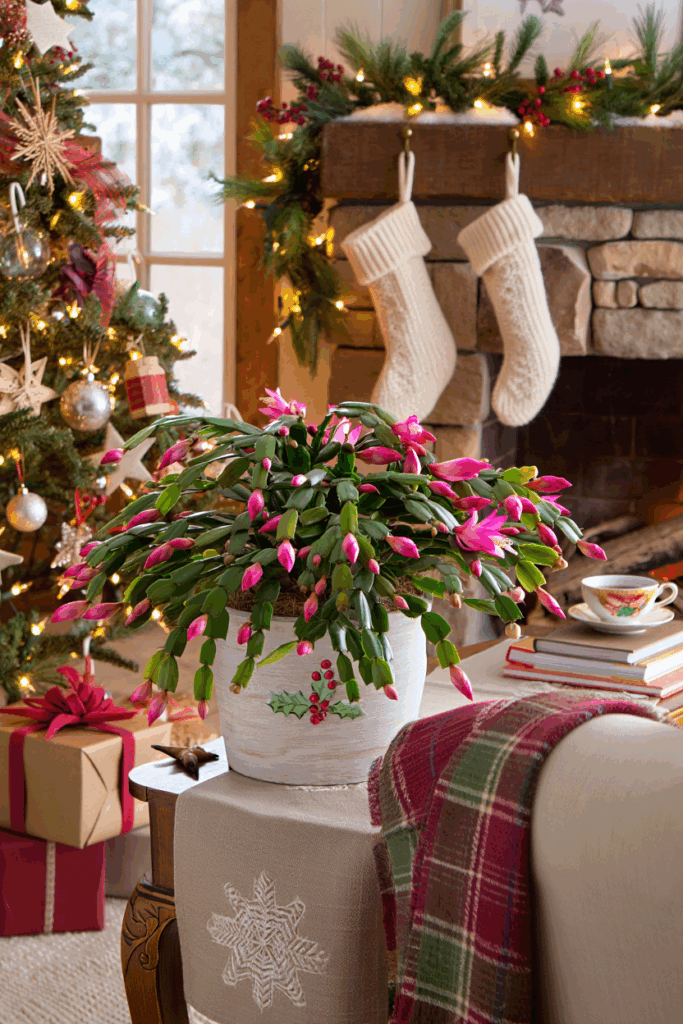
Your Christmas cactus doesn’t bloom just because you feed it well or keep it healthy. It blooms when it feels long nights and cooler air. Out in the Brazilian cloud forests where it comes from, the days naturally shorten in fall and the nights drop into the fifties. That shift tells the plant it’s time to rest for a few weeks and then start forming buds. Inside your home, you have to mimic that same change or your cactus won’t bother.
And here’s something else you should know. Those “leaves” you see aren’t really leaves. They’re flat stems, and every single flower grows right at the very tip. That means once buds appear, the plant is a little sensitive. Too much water, too much light at night, or moving it to a new spot can make those buds fall off before they even open.
So don’t feel discouraged if yours hasn’t bloomed yet. It isn’t being stubborn, it’s just waiting for the right signals.
Trick 1 – Controlling the Light
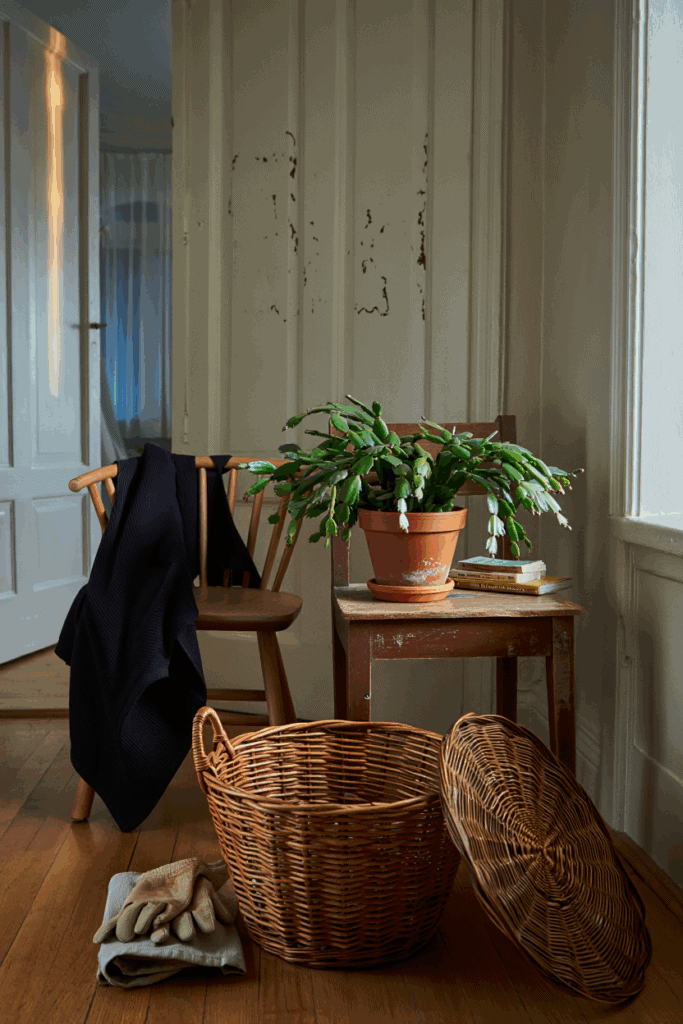
Getting your Christmas cactus to bloom early starts with one thing above all else, and that’s light — or more accurately, the lack of it. Botanists classify this plant as a short-day photoperiod bloomer, which means it won’t form buds until the nights outlast the days. The magic number is twelve to fourteen hours of uninterrupted darkness every night for three to four weeks. Without that, your cactus will stay green and leafy with no flowers in sight.
Here’s where a lot of people run into trouble. Even a quick flick of a lamp, the glow of a television, or light spilling in from a hallway can reset the plant’s internal clock. Think of it like a timer that starts over the moment darkness is broken. That’s how sensitive your cactus is to its night cycle.
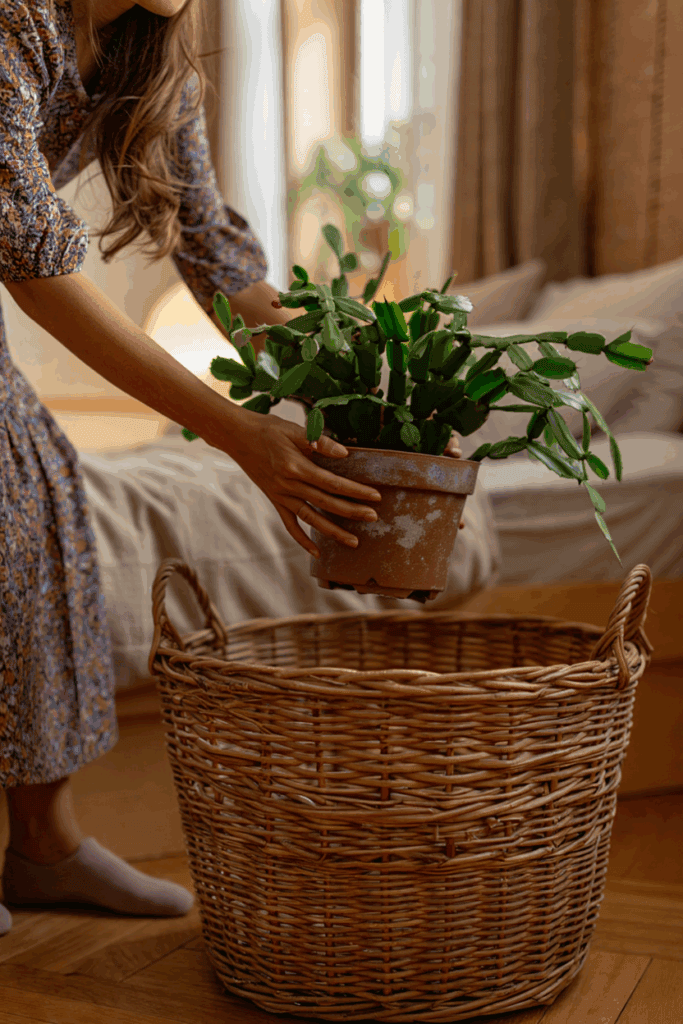
So how do you create the long nights it craves? You can move it into a naturally darker room, like a guest bedroom or a cool basement with only a small window. If your home doesn’t have a spot like that, you can easily make one. Place a cardboard box, an overturned laundry basket, or even a dark cloth over the plant at sunset. Just make sure there’s some airflow so the stems don’t sit in damp air. A towel draped loosely over a basket usually works well to block light while allowing ventilation.
If you really want to dial it in, you can mimic the seasons with a grow light on a timer. Give the plant ten to twelve hours of bright, indirect light during the day, then let the timer switch it off so the rest of the night is completely dark. Commercial growers use this exact trick to guarantee their Christmas cacti bloom on schedule for the holiday season.
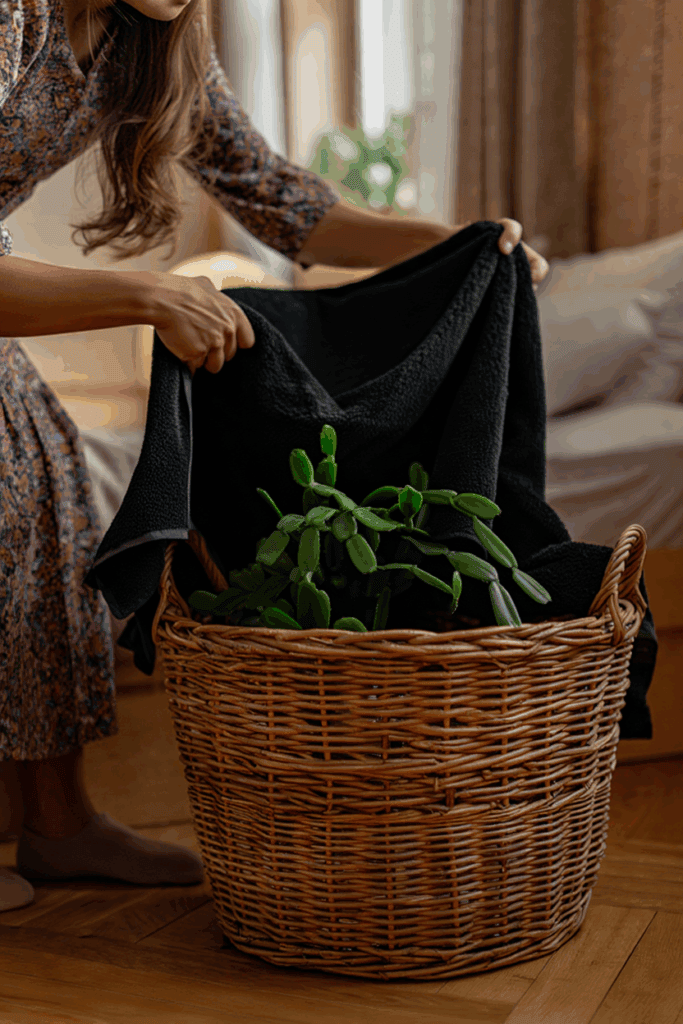
The plant isn’t fussy about when it gets those long nights, only that they’re consistent. Stick with the routine, and after three to four weeks you’ll spot tiny buds forming on the tips of the stem segments. key is being consistent. Once the cactus has had three to four weeks of long nights, you’ll start to notice tiny buds forming at the tips of its segments. That’s your sign that the timing worked and the show is about to begin.
Trick 2 – Pinch New Growth
When your Christmas cactus is still putting out soft green tips in early fall, it is focusing on growth instead of flowers. That fresh growth looks healthy, but it takes energy away from bud production. By gently pinching off those tender tips, you help the plant shift from growing new segments to preparing blooms.
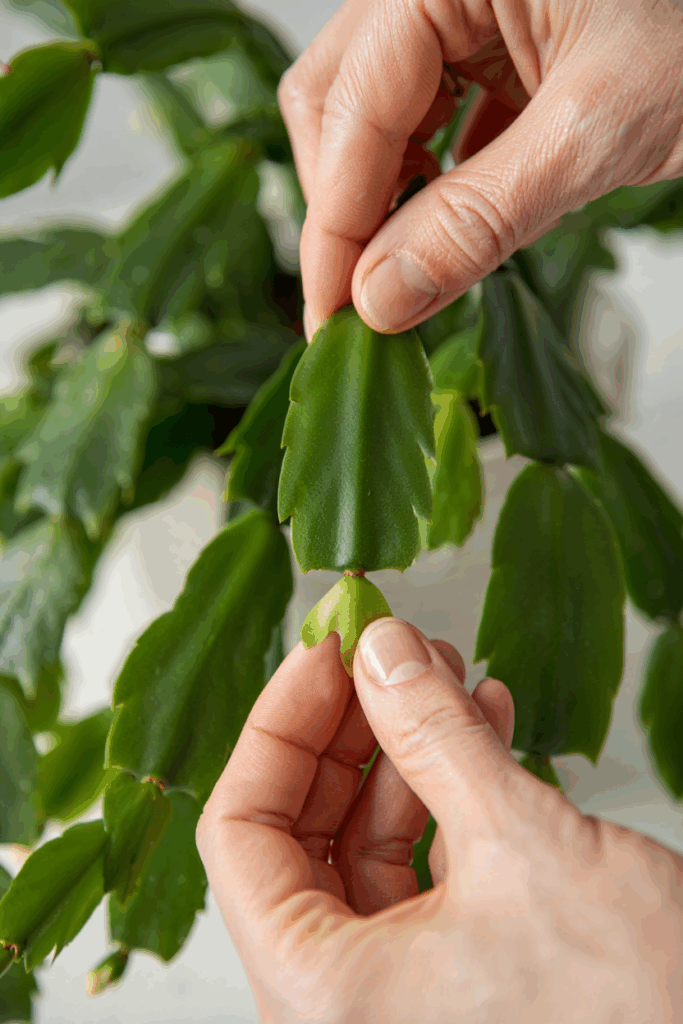
The process is simple. Look for the lighter green segments at the very ends of the stems. Using your fingers, snap off the newest piece where it meets the older part of the stem. Clean scissors work too if you prefer a neat cut. You do not have to pinch every branch. Removing one or two segments from the most active growers is usually enough to redirect the plant’s energy.

The best part is that the pieces you remove can become new plants. Leave them out for a day or two so the ends can dry, then press them into a pot filled with cactus soil or sandy mix. Keep the soil lightly moist and in a few weeks they should root and start growing.
Timing makes all the difference. Pinch in early fall before you see any buds forming at the tips. Once buds appear, avoid pruning or moving the plant because stress at that stage often leads to dropped buds.
Trick 3 – Drop the Temperature
Getting your Christmas cactus to bloom takes more than just long nights. Cool air is just as important, because it mimics the seasonal shift that tells the plant it is time to flower. In its native Brazilian forests, the cactus experiences warm days followed by cooler nights, and that drop in temperature is one of the main signals for bud formation.
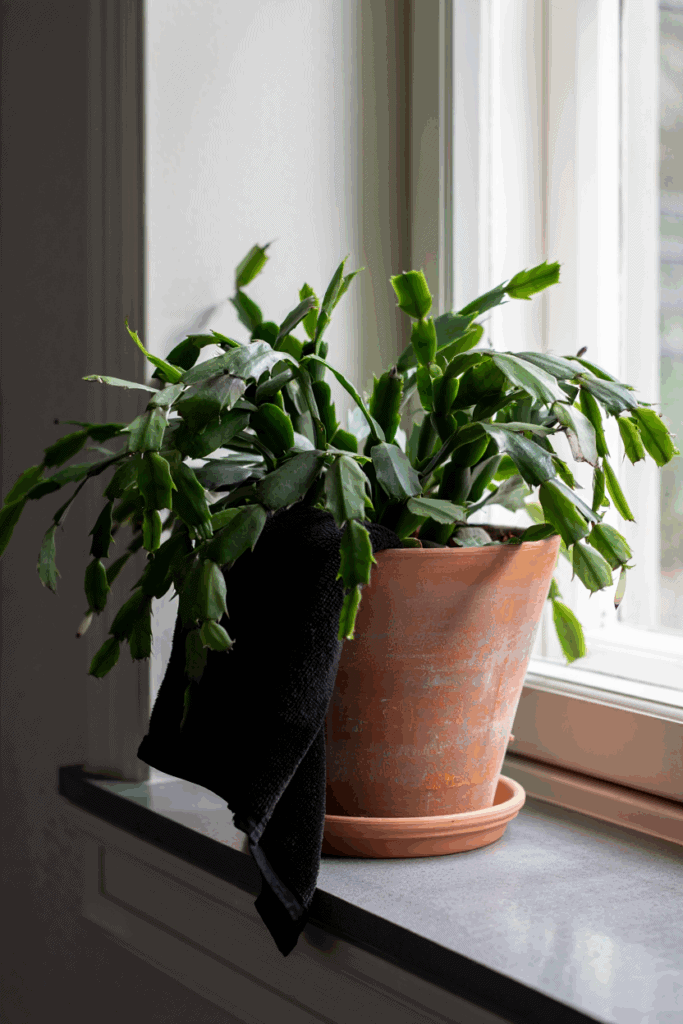
Aim to give your plant nights in the range of fifty five to sixty degrees Fahrenheit. Studies and grower experience show this is the sweet spot for triggering buds, especially when paired with twelve to fourteen hours of darkness. If your cactus spends the night in a warmer room that stays closer to seventy degrees, it is more likely to keep growing segments instead of setting flowers.
There are several easy ways to create these cooler nights indoors. A north facing window often works well once fall sets in. An enclosed porch or spare room that is not heated heavily can also do the job, as long as it does not dip below fifty degrees. In mild climates, some gardeners even move their cactus outdoors for a few weeks, bringing it back in before frost arrives.
Consistency matters more than anything. One or two chilly nights will not make a difference, but three to four weeks of steady cool evenings will. Avoid spots near radiators, heating vents, or kitchens where temperatures jump up and down. Sudden swings or warm drafts can stress the plant and cause developing buds to drop.
Trick #4 – Withhold Water for 30 Days
This one feels a little counterintuitive, but it works. If you want to push your Christmas cactus into bloom, give it a short “dry spell.” In nature, these plants experience a rest period before the rains return, and that pause helps trigger flowers. You can recreate the same thing indoors by withholding water for about thirty days.

During this time, keep the plant in a cool spot with long, dark nights. Do not let it sit in bright light or warm air, and resist the urge to give it a drink. The soil should dry out almost completely, but not to the point where the plant is shriveling. A little stress is what convinces the cactus that it is time to stop growing new segments and start setting buds.
After about a month of this treatment, you should see tiny buds forming at the tips of the stems. Once that happens, return to normal care. Resume light watering when the top inch of soil feels dry, and switch to a bloom-friendly fertilizer to support the flowers.
Trick #5 – Don’t Disturb Once Buds Form
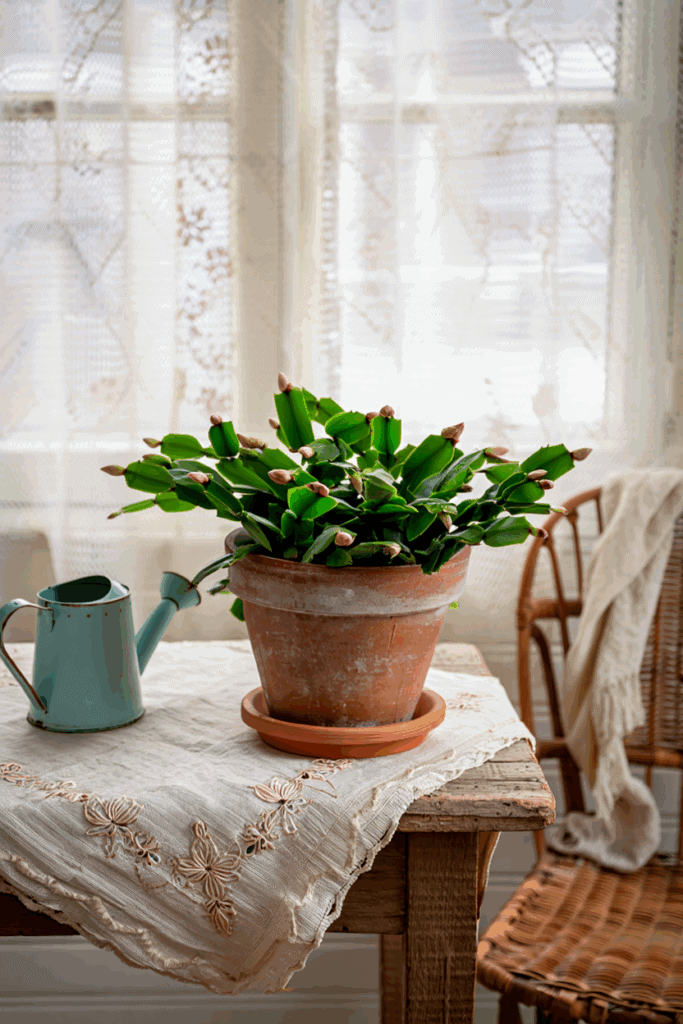
Once your Christmas cactus finally starts showing tiny buds at the tips of its stems, your job changes. Up until now, you have been nudging and stressing the plant to trigger flowers. From this point forward, the best thing you can do is leave it alone.
Christmas cactus buds are very sensitive to stress. If you move the pot to a new location, rotate it to face a different direction, or bump it while watering, the plant may simply drop its buds before they open. Sudden changes in temperature, drafts from doors or windows, or dry air from a heater vent can also cause bud drop.
Keep the plant in the same spot where it started forming buds, and try to maintain stable conditions. Water lightly when the top inch of soil feels dry, but avoid overwatering. A consistent routine, with steady light and steady moisture, is the key to carrying those buds all the way to full bloom.

Written By
Amber Noyes
Amber Noyes was born and raised in a suburban California town, San Mateo. She holds a master’s degree in horticulture from the University of California as well as a BS in Biology from the University of San Francisco. With experience working on an organic farm, water conservation research, farmers’ markets, and plant nursery, she understands what makes plants thrive and how we can better understand the connection between microclimate and plant health. When she’s not on the land, Amber loves informing people of new ideas/things related to gardening, especially organic gardening, houseplants, and growing plants in a small space.
